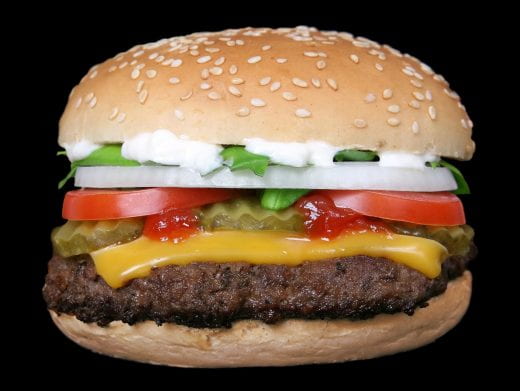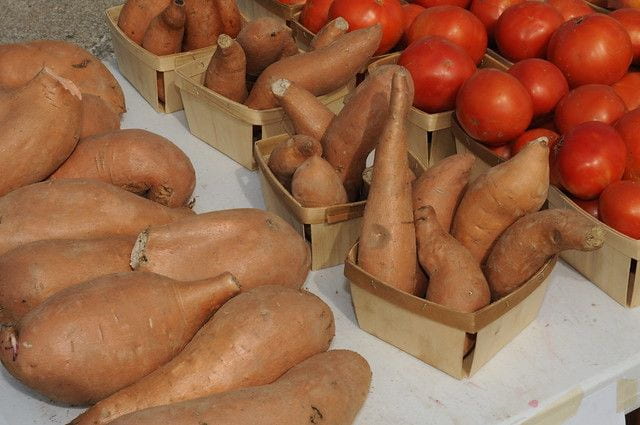Welcome to Better Kansas, where every Thursday we shed light on events, resources and other information designed to make your life, businesses, communities and state better. Share on social media and subscribe and get acquainted with your local extension office! – Mary Lou Peter mlpeter@ksu.edu
Better Living, Better Communities
 FOR MANY OF US, THE HOLIDAYS MEAN TRAVEL … DON’T LEAVE HOME WITHOUT DOING THIS ONE THING! Whether you’re driving to your in-laws, home from college, or just a quick jaunt down the road for groceries, download the winter survival kit app, compliments of the enterprising folks at North Dakota State University Extension. It’s available free for Android or iPhone and does cool things in case of an emergency, such as determine your geographic location, call 911, contact friends or family, store insurance policy and auto club information, and more. NDSU, like land-grant universities across the country, is one of our partners in the cooperative extension system. Thanks for sharing, NDSU! We all benefit.
FOR MANY OF US, THE HOLIDAYS MEAN TRAVEL … DON’T LEAVE HOME WITHOUT DOING THIS ONE THING! Whether you’re driving to your in-laws, home from college, or just a quick jaunt down the road for groceries, download the winter survival kit app, compliments of the enterprising folks at North Dakota State University Extension. It’s available free for Android or iPhone and does cool things in case of an emergency, such as determine your geographic location, call 911, contact friends or family, store insurance policy and auto club information, and more. NDSU, like land-grant universities across the country, is one of our partners in the cooperative extension system. Thanks for sharing, NDSU! We all benefit.
 I’VE HEARD THAT BLUEBERRIES ARE A ROCK STAR when it comes to healthy eating, but what other foods help lower the risk of cancer, heart disease and type 2 diabetes?
I’VE HEARD THAT BLUEBERRIES ARE A ROCK STAR when it comes to healthy eating, but what other foods help lower the risk of cancer, heart disease and type 2 diabetes?
- Strawberries
- Avocados
- Carrots
- Bananas
- Raisins
- Apricots
- Sweet potatoes
They’re all on the list. So are a lot more. Take a look at Choose Foods that Lower Your Risk of Cancer for a more complete list and health benefits they provide. It turns out that making a colorful plate isn’t just about being visually pleasing!
 IT’S SO IMPORTANT TO OUR PHYSICAL AND MENTAL HEALTH, but sometimes good, sound sleep is elusive. I know, when I don’t get enough zzz’s, every little ache is magnified, it’s harder to focus and more difficult to make decisions. The fact sheet Sleep: Want It, Need It, Get It sheds light on numerous sleep-related topics, including suggestions for dealing with sleeplessness. I was not familiar with the term “parasomnias” but now I am!
IT’S SO IMPORTANT TO OUR PHYSICAL AND MENTAL HEALTH, but sometimes good, sound sleep is elusive. I know, when I don’t get enough zzz’s, every little ache is magnified, it’s harder to focus and more difficult to make decisions. The fact sheet Sleep: Want It, Need It, Get It sheds light on numerous sleep-related topics, including suggestions for dealing with sleeplessness. I was not familiar with the term “parasomnias” but now I am!
Better Farming, Ranching and Gardening
 REMEMBER THE PHRASE, “WHERE’S THE BEEF?” made famous by actress Clara Peller in a Wendy’s commercial. Yes, it was a long time ago 😊, but this went viral before social media even existed! For those who are curious about meat demand through the years, including demand in this country, as well as exports of beef, pork and chicken, it’s all on the Meat Demand page on AgManager.info. I still enjoy watching Clara and the commercial.
REMEMBER THE PHRASE, “WHERE’S THE BEEF?” made famous by actress Clara Peller in a Wendy’s commercial. Yes, it was a long time ago 😊, but this went viral before social media even existed! For those who are curious about meat demand through the years, including demand in this country, as well as exports of beef, pork and chicken, it’s all on the Meat Demand page on AgManager.info. I still enjoy watching Clara and the commercial.
 LATE OCTOBER BROUGHT A SHARP DROP IN TEMPERATURES and we’re not the only ones shivering. The newly planted winter wheat crop in some areas may have been affected, depending on soil temperatures, moisture and other factors. Read about it and take a look at some interesting photos and graphics in this Agronomy eUpdate article. As of Nov. 3, 94% of the Kansas crop had been planted, ahead of 81% last year and 91% (five-year) average, according to the National Agricultural Statistics Service.
LATE OCTOBER BROUGHT A SHARP DROP IN TEMPERATURES and we’re not the only ones shivering. The newly planted winter wheat crop in some areas may have been affected, depending on soil temperatures, moisture and other factors. Read about it and take a look at some interesting photos and graphics in this Agronomy eUpdate article. As of Nov. 3, 94% of the Kansas crop had been planted, ahead of 81% last year and 91% (five-year) average, according to the National Agricultural Statistics Service.
 KANSAS HAS LONG BEEN A LEADER IN BEEF PRODUCTION, with cattle and calves generating $8.27 billion in cash receipts in 2017 alone. That accounted for more than 50% of overall agricultural receipts that year, which included some of our other well-known agricultural claims to fame such as wheat and grain sorghum. To support beef cattle producers and provide the latest research and management information, seven Calving Schools are planned around the state from November-January.
KANSAS HAS LONG BEEN A LEADER IN BEEF PRODUCTION, with cattle and calves generating $8.27 billion in cash receipts in 2017 alone. That accounted for more than 50% of overall agricultural receipts that year, which included some of our other well-known agricultural claims to fame such as wheat and grain sorghum. To support beef cattle producers and provide the latest research and management information, seven Calving Schools are planned around the state from November-January.
_
For more resources and activities, contact the K-State Research and Extension office in your area. Check out our other blogs and subscribe to our weekly emails here: https://www.ksre.k-state.edu/news/blogs/





